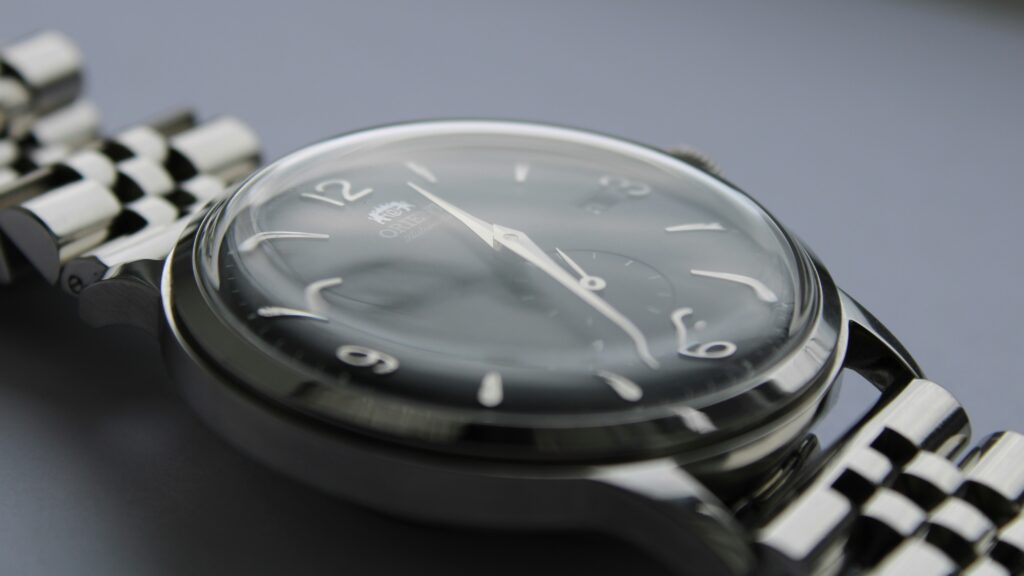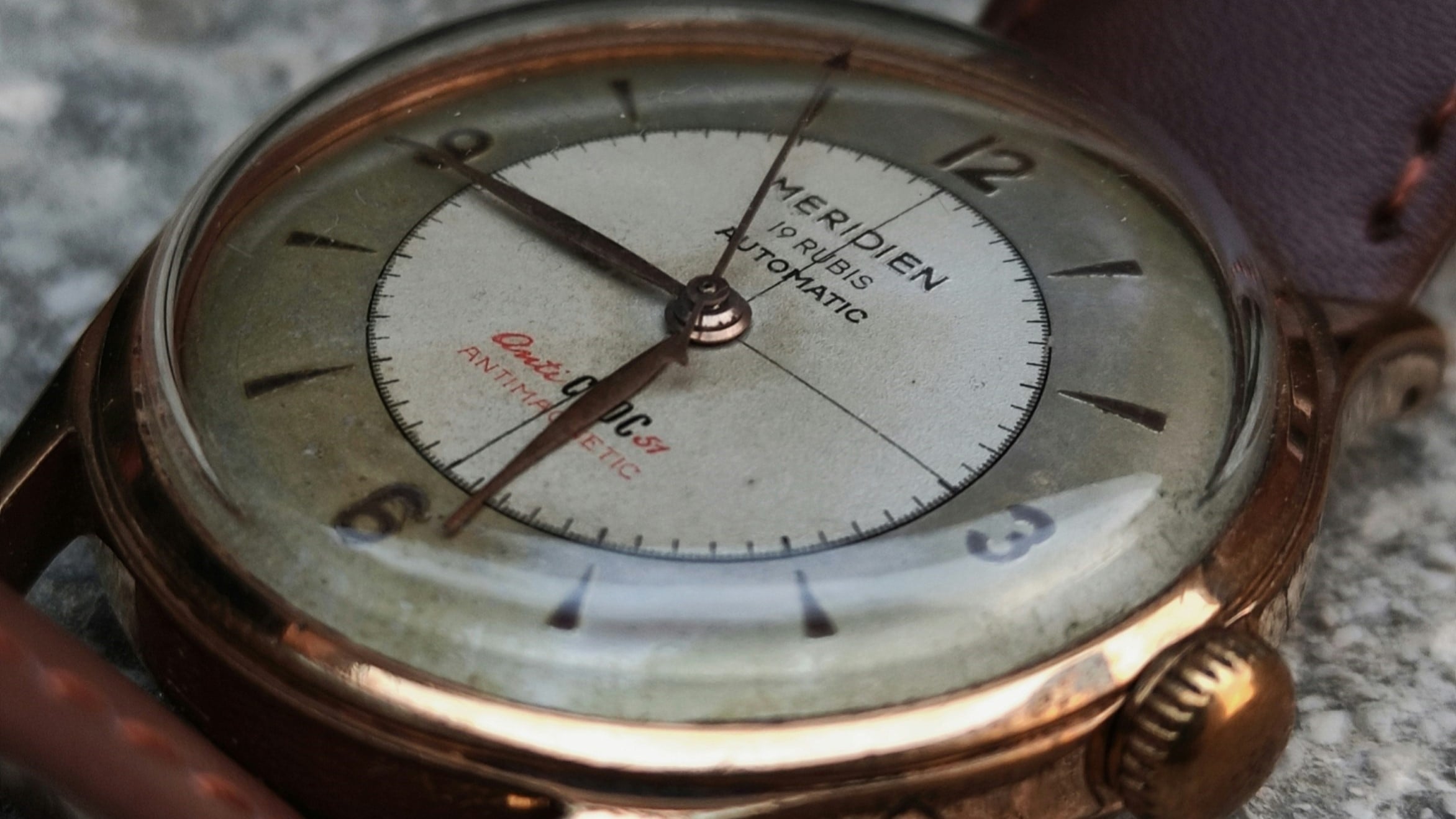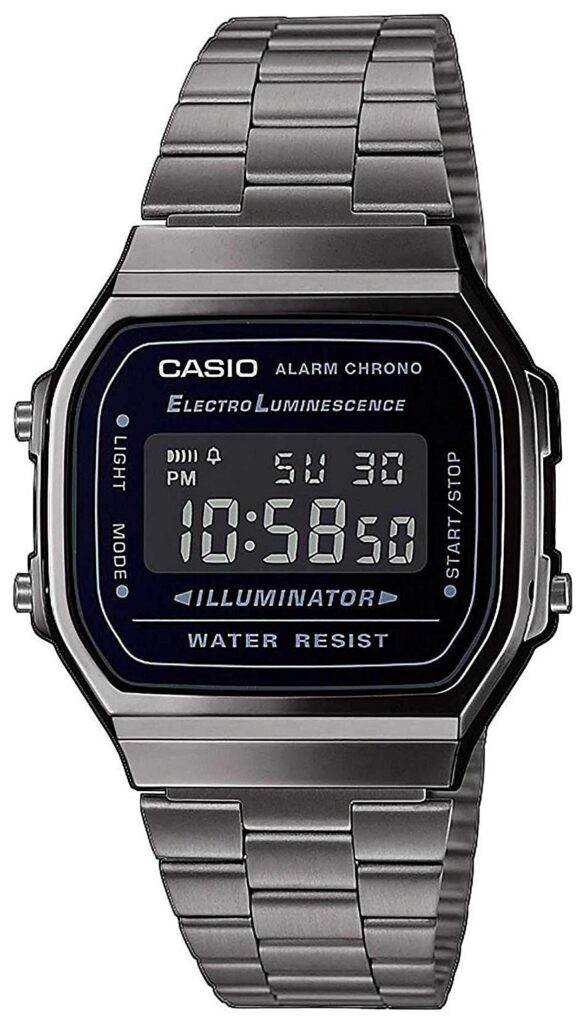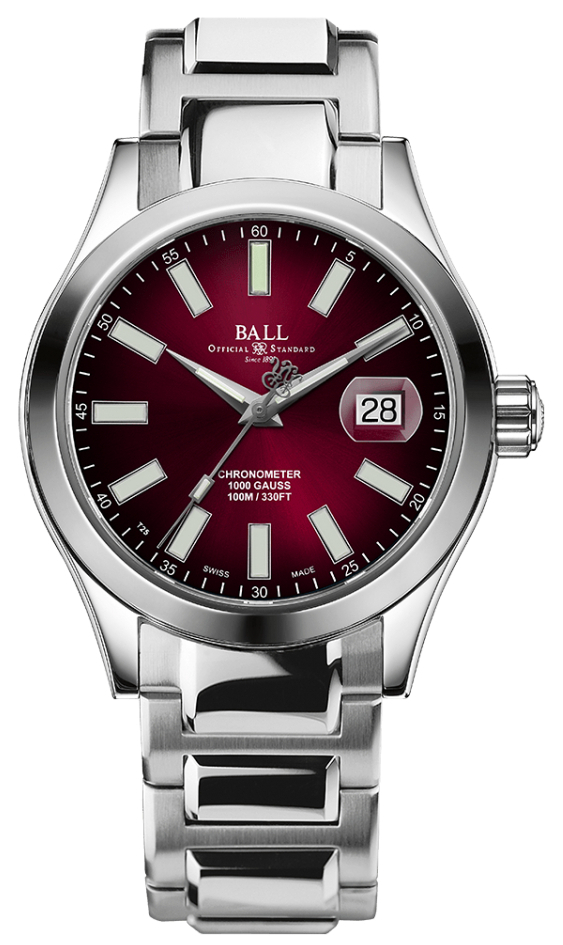When looking to purchase a watch, there are certain requirements we want it to meet. Does it have a Swiss-made movement? Does it have a high water resistance? These are all questions we may ask ourselves before selecting a watch. But we should also be asking ourselves ‘What type of glass protects the dial?’ In watchmaking, there are three types of watch glass and in this Watches 101 guide, we will present you their pros and their possible cons. While it is a complete personal preference as to what glass you want encasing the dial, some are much better at protecting than others. Intrigued to find out the differences between the types of watch glass as well as their properties? Then keep reading.
What are the Types of Watch Glass?
Acrylic
Also known as ‘Hesalite’ or ‘Plexiglass’, acrylic crystal is essentially a specialised form of plastic that is designed to fit over a watch’s dial. Due to its low retail cost, this type of glass is often found in extremely low-cost watches. This type of glass is also used on retro-inspired watches as its flexible nature allows watchmakers to create a domed effect very easily. While acrylic glass is very affordable and lightweight, its softness makes it susceptible to scratches. The scratches can be easily buffed out, but it can become quite an inconvenience if you are constantly having to do this.
The main advantage of acrylic glass is that it can come in various designs and colours. Hence making it a desirable option for the lower end of the market and fashion watches. The main disadvantage, however, is its low resistance to wear. Its low resistance unfortunately limits its lifespan, but remember acrylic glass is easier to replace than mineral or sapphire. Overall, some people naturally prefer the look of acrylic glass, while others think it looks cheap.
Our Acrylic Glass Pick: Casio | Vintage | Silver Stainless Steel Bracelet | Black Dial A168WEGG-1BEF
A classic Casio design, this watch is part of the Vintage Retro Collection. The timepiece features a digital display which is protected by a 36mm resin case and acrylic crystal. The flexibility of acrylic glass means it can be effortlessly shaped. Hence Casio have used it on this rectangular display. Amongst the many functions featured on the watch are alarms, an LED backlight and a stopwatch alongside date and weekday functions. Once set, an automatic calendar will always display the correct date. Securing the watch to the wrist is a gunmetal grey stainless steel bracelet with a deployment clasp. Moreover, the watch has a water resistance that makes it suitable for daily wear.
Mineral
Sometimes known as ‘Hardlex’, mineral crystal is a common choice for entry-level watch brands as it has been produced from glass. More often than not, the glass has been heat-tampered, meaning its surface has been placed under extreme heat to increase its shatter and scratch resistance. As well as this, mineral glass is naturally less reflective than sapphire; it provides excellent clarity. While these factors are great, it is important to note that mineral glass is more prone to chipping. So if your watch crystal does chip, the whole glass will need replacing; it cannot be polished or repaired.
To compensate for the properties of mineral glass, some manufacturers use mineral glass with a thin layer of sapphire coating it. It has better impact resistance than in mineral, and in theory, sapphire crystal can only be scratched with diamond. A thin layer of sapphire on top of the mineral glass not only helps to increase its impact resistance but also increase its scratch resistance. Overall, mineral glass is commonly used by entry-level and fashion watch brands. While it is not as scratch-resistant as sapphire, its cost-friendly nature makes it attractive to many.
Our Mineral Glass Pick: Seiko Presage Women’s Automatic Watch Rose Gold Brown Leather Strap SRP852J1
Inspired by Japanese cocktail culture, this watch is part of Seiko’s Presage collection. The timepiece features a textured golden-coloured dial which is protected by a 33.8mm stainless steel case and a box-shaped hardlex crystal. One of Seiko’s most important creations, hardlex increases the watch’s resistance to scratches and shatters. Adding to the watch’s great functionality, the dial features a date display at the 3 o’clock position and a stop-seconds hand function. Securing the watch to the wrist is a brown calfskin strap with a three-fold clasp and push-button release. A reliable 4R35 automatic calibre, with a 41 hour power reserve, keeps the watch moving. This movement, alongside the hardlex crystal, creates a dependable and durable watch.
Sapphire
The most expensive type of watch glass, sapphire crystal is hard, compact and incredibly scratch-resistant. It is often treated with an anti-reflective coating which provides extra clarity over the dial. The sapphire glass we seen covering most watch dials is made of synthetic sapphire. Not really a glass at all, its is a very hard material made by crystalising pure aluminium oxide at a very high temperature. It has a hardness of 9 on the Mohs scale, which is a system for estimating the relative hardness of different materials. Due to its hardness, manufacturers can only cut sapphire using diamond-coated saws. Hence why this type of watch glass has the most expensive price tag.
The main advantage of sapphire glass is its unparalleled scratch resistance. You can wear a watch protected by sapphire glass and remain confident that it won’t scratch or shatter – unless exposed to heavy impacts. The main disadvantage, however, is that if the glass becomes damaged or smashed repairs generally aren’t possible. A full replacement crystal would be necessary and this can be quite expensive. Overall, sapphire glass is most commonly used by high-end brands. While it isn’t the most shatter-proof of the watch glasses, it offers great scratch-resistance and clarity.
Our Sapphire Glass Pick: Ball Watch Company Engineer III Marvelight Chronometer (40mm) Automatic Burgundy Red NM9026C-S6CJ-RD
A re-imagination of Ball’s Engineer series, this Engineer III model brings sport-elegance to the next level. To ensure great durability, the burgundy red dial is protected by a sapphire crystal and a 40mm stainless steel case. As well as being scratch-resistant, the sapphire glass has several layers of anti-reflective coating to help improve clarity. For optimal readability, even in low-light conditions, gas micro tubes on the watch’s hands and indices illuminate at the push of a button. To add to this, a magnified date aperture features at the 3 o’clock position. Securing the watch to the wrist is a stainless steel bracelet with a folding buckle. With an automatic BALL RR1103-C calibre and water resistance of 100 metres, this watch is not only reliable but also practical. You can wear it daily and not have to worry about damaging it thanks to the sapphire glass protecting the dial.
How to Differentiate the Different Types of Watch Glass

If you purchase your watch from a reliable brand or shop, you will always be given clear information about what glass the watch has. However, if you have not been provided with this information, or you are just curios to test the glass, there are some tips to figure out what glass type is protecting your watch.
You can feel the difference between the types of watch glass by pressing them against your cheek. If the glass is warm then it will be acrylic, but if it is cold then it could either be mineral or sapphire. When it comes it mineral and sapphire glass, it is almost impossible to see the distinction between them. However, there are two tricks you can perform. The first being to drop water on the glass; if it stays in the drop shape it is sapphire, if it flows off then it is mineral. The second being a sound test; if you tap your finger on the glass and the sound is low-toned it is sapphire, whereas if it is high-toned it is mineral.
What did you think of our Watches 101: What are the Types of Watch Glass? Do you now understand the differences between each glass type? Let us know in the comments!








